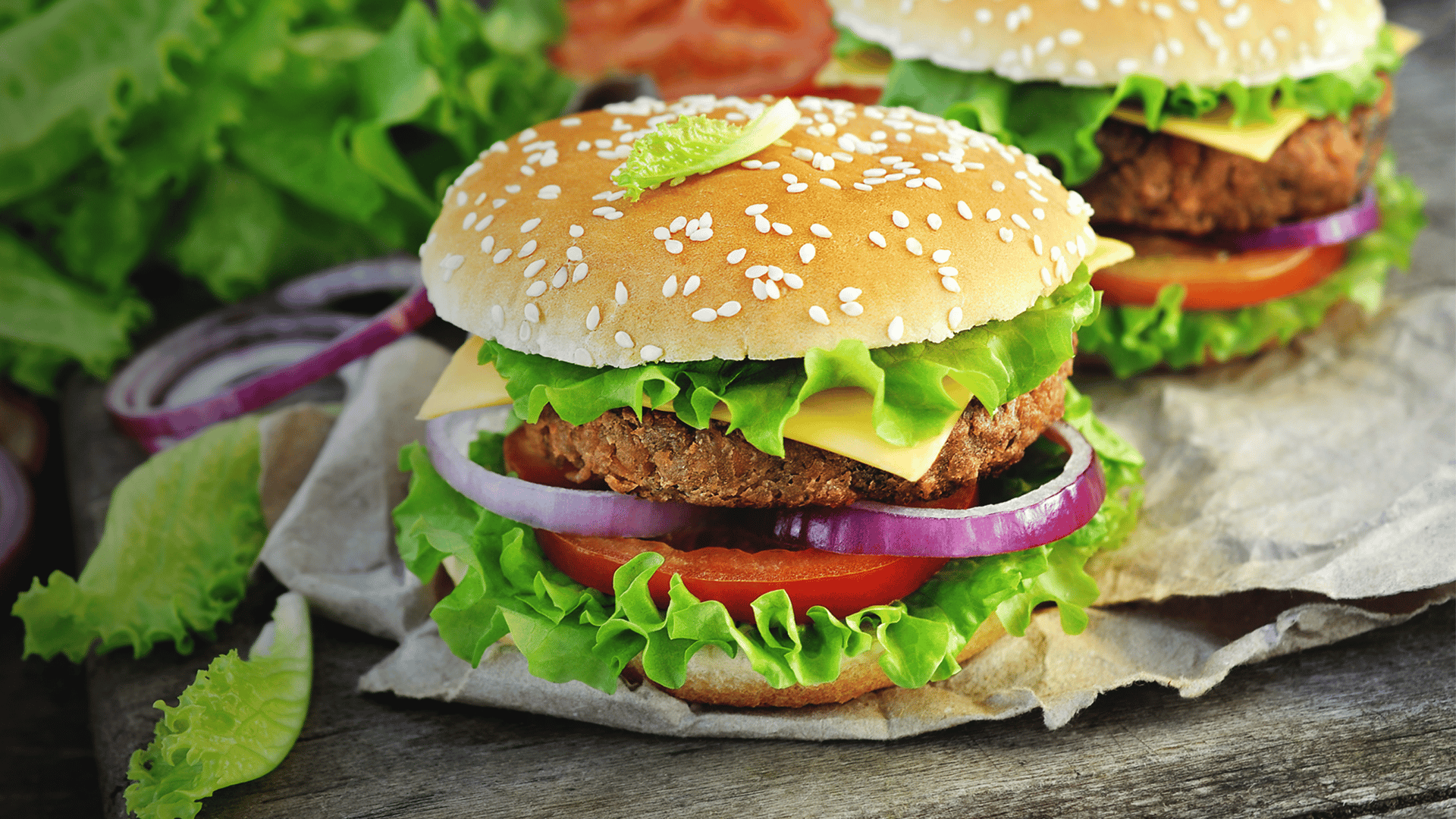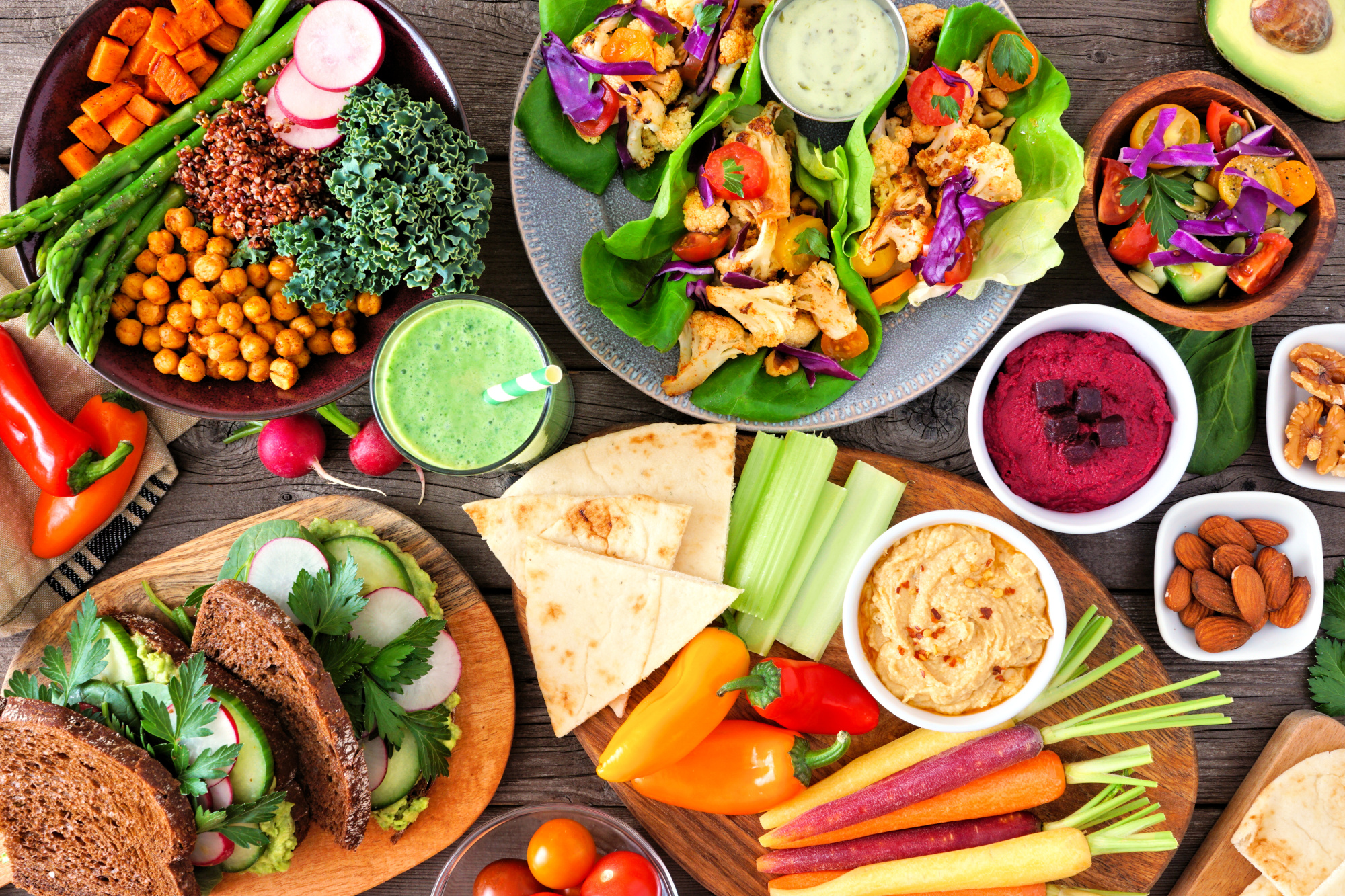Tens of thousands of people around the world are signing up for the ProVeg Veggie Challenge – and doing so for all kinds of reasons. Some people want to improve their health while others are motivated to reduce their environmental footprint. While there are many other reasons to reduce your meat and dairy consumption and increase your intake of plant-based foods, you might find yourself even more motivated if you had some tangible numbers showing the impact you could make by changing your diet for just one month.
ANIMALS
By choosing to eat less (or stop eating) animal-based products, especially meat but also dairy, and eggs, you’ll potentially reduce the demand for animal-based products and spare the needless suffering and death of animals1 in the future.
- Vegan for 30 days: ±3 animals 2.
- Vegetarian for 30 days: ±3 animals
- Reducetarian3 for 30 days: ±1.5 animals
CO2
The livestock industry is among the world’s leading causes of greehouse gas emissions. Its greenhouse gas emissions are higher than all cars, buses, planes and trains combined. By reducing your consumption of animal products for a single month, you’ll reduce your personal carbon footprint by a considerable amount. 6 7 8 9. It can be quite hard to understand what a kilogram of CO2 equivalents really means – so for context, we’ve used the assumption that a new car emits an average of about 122.4 grams of CO2 per km.10
- Vegan for 30 days: 62.5 kg CO2 (or driving about 510 km)
- Vegetarian for 30 days: 44.4 kg CO2 (or driving about 360 km)
- Reducetarian for 30 days: 22.2 kg CO2 (or driving about 180 km)
WATER
Globally, about 70% of the water that humans consume is used in the agricultural sector11 – and since it takes much more water to produce animal-based products than plant-based foods such as beans and whole grains, reducing your intake of animal-based products can have a substantial impact on the demand for water in food-producing regions. After all, plants need water to grow, and meat production requires that animals eat a lot of plants. A water footprint is a combination of the freshwater directly used for the production (blue water) of a certain product and drawn from groundwater, rivers, and other sources and water from precipitation (green water), that is stored in the soil and potentially available to plants. The proportion of water in the different categories varies between products and regions. In general, plant-based diets have a lower water footprint in total, with possible water savings of up to 55% on a plant based diet.12 However, the biggest component of most water footprints is green water. The amount of blue water is usually lower and can vary, depending on the product and region.13 14
For the VeggieChallenge, we used some general assumptions from Hoekstra (2015), who suggests that, in industrialised countries, food of animal origin uses about 2.5 liters of water per kcal and food of vegetable origin about 0.5 litres per kcal. The differences between a diet containing meat and a vegetarian diet can be as high as 1,300 liters per day.15 More recent studies have also showed, that vegetarian diets might have the potential to reduce water use by up to 2,000 litres per day, depending on the region.16
Here are the water savings you potentially could make by taking the Veggie Challenge:17
- Reducetarian for 30 days: 19,500 litres
- Vegetarian for 30 days: 39,000 litres
- Vegan for 30 days: 39,000 litres
LAND
A plant-based diet also spares vast swathes of land – since the food that animals eat must be grown somewhere. Much of the deforestation in South America, for example, is due to soya crops that are grown to feed livestock – only about 6% of the global soya-bean crop is used as food for humans.18 In the US, replacing beef with beans would free up 42% of farmland. By taking the Veggie Challenge for just one month, you’ll save a lot of farmland.19
- Vegan for 30 days: 80 m2
- Vegetarian for 30 days: 65 m2
- Reducetarian for 30 days: 32 m2
Do these numbers inspire you to try the Veggie Challenge? Sign up now – and share with your friends!
References
- Effectively, you will reduce the demand for animal products, so it’s future lives that you’ll save.
- The figures include direct consumption of land animals and fish. Figures for land animals were obtained using production and consumption data from The Food and Agricultural Organization of the United Nations: Food and Agriculture Organization of the United Nations (2019): Livestock primary. FAOSTAT Database. Rome, Italy. Available at: http://www.fao.org/faostat/en/#data/QL and Food and Agriculture Organization of the United Nations (2019): New Food Balances. FAOSTAT Database. Rome, Italy. Available at: http://www.fao.org/faostat/en/#data/FBS. The data on Fish was determined using consumption data from different countries and the estimated mean weights for different fish e.g. from Fishcount.org (http://fishcount.org.uk/studydatascreens/2016/numbers-of-wild-fish-A0-2016.php) For the figures used in this article, we calculated a weighted average for animal savings of the different countries the VeggieChallenge takes place in so far. This is a conservative estimate, only taking into account the direct consumption of land animals and fish. Bycatch, fish used as feed, and shellfish have not yet been considered but might increase the number of animals tremendously. Please keep in mind, that those figures can vary based on your dietary behaviour and might be larger or smaller
- A ‘reducetarian’ (or meat-reducer) is assumed to eat a vegetarian diet half of the time, i.e. to save 50% of what a vegetarian would save.
- For the figures used in this article, we calculated a weighted average for animal savings of the different countries the VeggieChallenge takes place in so far. This is a conservative estimate, only taking into account the direct consumption of land animals and fish. Bycatch, fish used as feed, and shellfish have not yet been considered but might increase the number of animals tremendously. Please keep in mind that those figures can vary, based on your dietary behaviour and might be larger or smaller.
- The data on Fish was determined using consumption data from different countries and the estimated mean weights for different fish e.g. from Fishcount.org http://fishcount.org.uk/studydatascreens/2016/numbers-of-wild-fish-A0-2016.php For the figures used in this article, we calculated a weighted average for animal savings of the different countries the VeggieChallenge takes place in so far. This is a conservative estimate, only taking into account the direct consumption of land animals and fish. Bycatch, fish used as feed, and shellfish have not yet been considered but might increase the number of animals tremendously. Please keep in mind that those figures can vary based on your dietary behaviour and might be larger or smaller.
- E. Hallstrom, A. Carlsson-Kanyama, P. Borjesson. (2015). Environmental impact of dietary change: a systematic review. Journal of Cleaner Production 91 1-11.
- Scarborough, P., P. N. Appleby, A. Mizdrak, et al. (2014): Dietary greenhouse gas emissions of meat-eaters, fish-eaters, vegetarians and vegans in the UK. Climatic Change 125(2), 179–192. doi:10.1007/s10584-014-1169-1
- Abejón, R., L. Batlle-Bayer, J. Laso, et al. (2020): Multi-Objective Optimization of Nutritional, Environmental and Economic Aspects of Diets Applied to the Spanish Context. Foods 9(11), Multidisciplinary Digital Publishing Institute, 1677. doi:10.3390/foods9111677
- Springmann, M., L. Spajic, M. A. Clark, et al. (2020): The healthiness and sustainability of national and global food based dietary guidelines: modelling study. BMJ m2322. doi:10.1136/bmj.m2322 doi:10.1136/bmj.m2322
- Reducing CO2 emissions from passenger cars, accessed 19 April 2019, https://ec.europa.eu/clima/policies/transport/vehicles/cars_en
- WWAP (2017): The United Nations World Water Development Report 2017. Wastewater: The Untapped Resource. UNESCO, Paris.
- Vanham, D., S. Comero, B. M. Gawlik, et al. (2018): The water footprint of different diets within European sub-national geographical entities. Nature Sustainability 1(9), 518–525. doi:10.1038/s41893-018-0133-x
- Vanham, D., S. Comero, B. M. Gawlik, et al. (2018): The water footprint of different diets within European sub-national geographical entities. Nature Sustainability 1(9), 518–525. doi:10.1038/s41893-018-0133-x
- Harris, F., C. Moss, E. J. M. Joy, et al. (2019): The Water Footprint of Diets: A Global Systematic Review and Meta-analysis. Advances in Nutrition doi:10.1093/advances/nmz091 doi:10.1093/advances/nmz091
- A.Y. Hoekstra (2015). The Water Footprint: The Relation Between Human Consumption and Water Use. The Water We Eat, Springer Water, pp 35-48. Calculated from table 2 (page 44). Unfortunately they did not calculate savings for a vegan diet. If we assume that all consumed calories come from plant-based foods the number might be as high as 57.000 liters for a vegan diet.
- Vanham, D., S. Comero, B. M. Gawlik, et al. (2018): The water footprint of different diets within European sub-national geographical entities. Nature Sustainability 1(9), 518–525. doi:10.1038/s41893-018-0133-x
- A.Y. Hoekstra (2015). The Water Footprint: The Relation Between Human Consumption and Water Use. The Water We Eat, Springer Water, pp 35-48. Calculated from table 2 (page 44). Unfortunately they did not calculate savings for a vegan diet. If we assume that all consumed calories come from plant-based foods the number might be as high as 57.000 liters for a vegan diet.
- Soy Facts, accessed April 2019, https://www.oilseedandgrain.com/soy-facts.
- E. Hallstrom, A. Carlsson-Kanyama, P. Borjesson. (2015). Environmental impact of dietary change: a systematic review. Journal of Cleaner Production 91 1-11.










